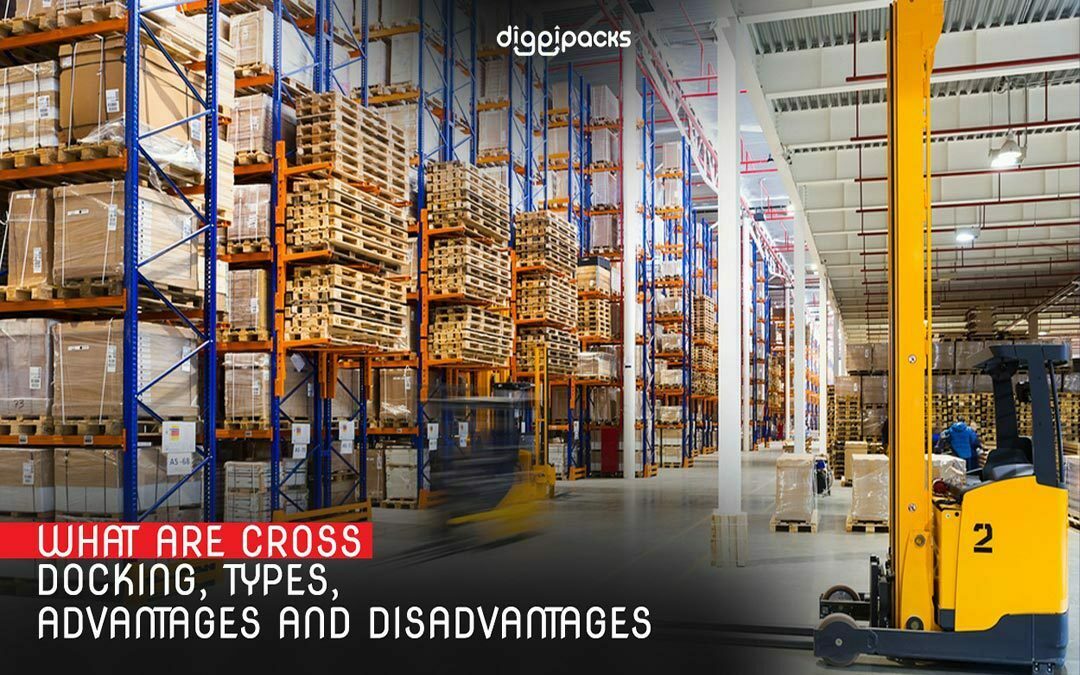Cross-Docking is one of the most important factors that help you keep less inventory in your warehouse or experience faster transfers in inventory, and Cross-Docking can also be used to save on expenses associated with controlling inventory, and in this article we will talk about everything you need to know about Cross-Docking , Types, Advantages and Disadvantages.
What is Cross-Docking?
Cross-docking is a process in which products are supplied directly to customers without the need to process content between production plants, and this effectively reduces material handling as well as the purchase of goods in the warehouse.
Also, cross-docking efficiently speeds up the shipping process, thus customers get their orders directly, and in fact that is the primary goal of an integrated supply chain, but that does not preclude some actual risks in cross-docking solutions.
Types of Cross – Docking
There are a number of forms of cross-docking, and each one is related to the type of product the person himself sends, and here are the most prominent types of cross-docking:
1. Opportunistic cross-docking
This form is in which the products are transported directly from the receiving dock to the overseas delivery options dock, and it is used for the purpose of fulfilling the marketing order that the customer wants.
2. Cross-dock production
Through it, the products that have been sold as well as the incoming products that will be manufactured are received, and the warehouse can receive the goods and then arrange the sub-assemblies of the manufacturing orders.
3. Transport Cross-Docking
In this figure, freight from different carriers in the LTL segments is combined with the smaller package segments, in order to benefit from economies of scale.
you may like:
4. Retail Cross-Docking
It is the form by which products from different manufacturers are found, or sorted to many retail outlets on outbound vehicles, and this method reduces costs a lot.
5. Supplier Cross-Docking
In this form, the goods received from different vendors are combined and then shipped to the customer as soon as the initial element is received, where the distributor of auto components, for example, can locate components from different vendors or combine them in the same shipment for the customer.
How does Cross-docking work?
Now you may be wondering about the way cross-docking works, and it is simply that the goods are transported by truck, plane or other suitable means of transport, and most often the products are allocated to a manufacturer.
And upon implementation of the cross-docking process, the products are taken from the first stage in shipping logistics, and then they are repacked and loaded again in another way to be shipped to the merchant, with the aim of transporting the products with the least possible amount of handling.
Advantages of Cross – Docking
There are a number of advantages that cross-docking gives user, the most prominent of which are:
1. Efficiency
As the cross-docking process helps in loading and converting products faster and in a short time, which positively affects customers, and thus creates a competitive advantage for companies, especially since the cross-docking process helps them meet customer requirements faster and more reliably.
2. Reducing costs
Cross-docking significantly reduces costs, especially since it actually reduces the need for large areas for a long time, which results in reduced packaging and inspection costs.
3. Reducing inventory management time
One of the most prominent advantages of cross – docking is reducing the time spent on managing inventory, by spending fewer hours dealing with inventory, and thus saving time on other, more important tasks, which will positively affect productivity.
Disadvantages of Cross – Docking
Although the cross – docking process gives its users great advantages, there are a number of disadvantages that it is also involved in sometimes, which we will refer to in the next part:
1. The need for a lot of time to plan
One of the main disadvantages of cross – docking is that it requires a long time to be properly planned and executed. Despite its speed and effectiveness in quickly transporting incoming goods to an outgoing vehicle, the process of preparing it requires a rather long time.
2. The high costs of using it
Although cross – docking reduces costs, the costs to install and use for the first time are rather high, as defining effective cross – docking procedures requires a large initial investment, but let’s agree that in the long term you will lower a lot of your costs.
3. Deflation risks
When the correct procedures for cross – docking are not in place, so-called shrinkage risks may arise.
you may like:
Is Cross-Docking my business solution?
Now you may be wondering, is cross – docking a workable solution? It has many benefits but it will be costly to implement it for the first time, so you need to determine whether cross – docking is a good fit for your business.
But in general, cross – docking is a practical solution, and even major companies, especially auto suppliers, are one of the industries that use cross – docking the most for long periods of time.
In addition to the food service industry, it also relies on cross – docking, especially since consumer restaurants provide a continuous supply of ingredients, so determining the effectiveness of cross – docking depends mainly on the nature of your business.

Recent Comments